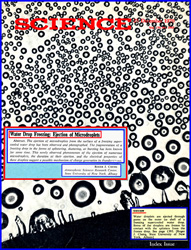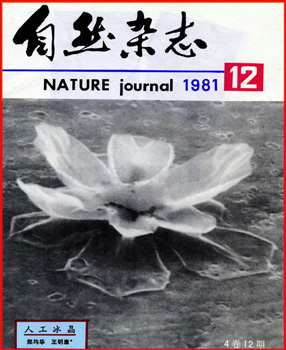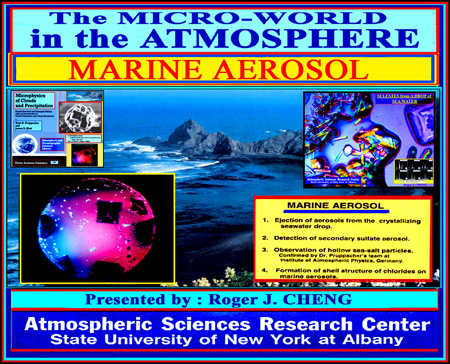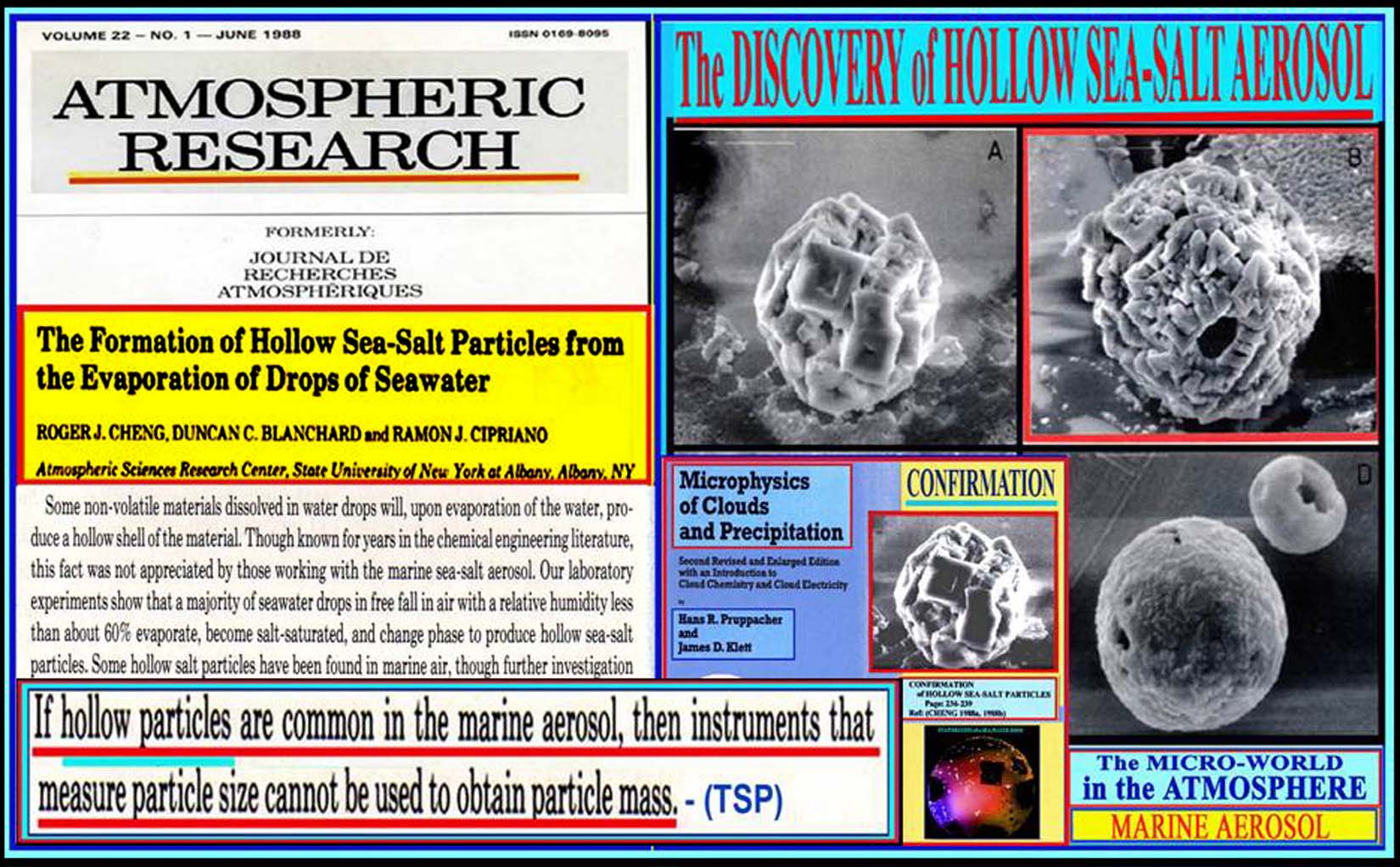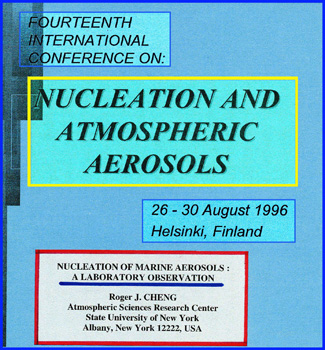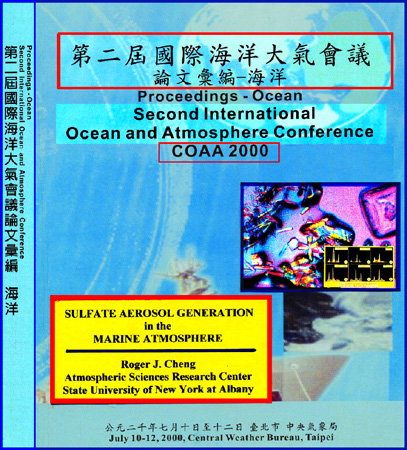ATMOSPHERIC SERENDIPITY |

|
  |
  |
|
||||||||||||||||||||
Roger
J. CHENG and Vincent J. SCHAEFER |
||||||||||||||||||||
ASRC-SUNYA-UALBANY |
||||||||||||||||||||
|
||||||||||||||||||||
|
|
The picture at first seems to be just two pleasant looking men at a formal event. But this is a picture that has many stories behind it. Above all, the stories inter-twine in a lifetime of work. And these two particular people are examples of how good men become great men, reaching beyond limitations, through supportive mentoring and collegial sharing. The men are both very accomplished research scientists with a world reputation. Both started in respectable, but humble, circumstances. And literally, they began their lives half a world away. Beyond the seven seas. Vincent Schaefer, the older man at the left of the picture, was born in Schenectady, New York in the first decade of the Twentieth Century. Schenectady, a hotbed of engineers working for the General Electric Company in the most explosive time in history of inventive men, and an occasional woman, reaching in every direction to create a highly technological modern world, with electricity at its core. Though Vincent Schaefer had to quit high school to help his parents feed the family, and he never had the money or time for college, his life was filled with what he always called Serendipity. For him it was a word with a capital 'S' and an exclamation mark. It led Vincent to his great mentor, the Nobel Laureate Irving Langmuir. From many eager applicants, Langmuir hired the machinist apprentice Schaefer to build laboratory equipment. This happenstance ended up ensuring the brilliant young Schaefer of the laboratory space and funding to explore the mysteries and practical values of such natural phenomena as snow, ice and rain-including the seeding of clouds for weather modification. Above all other values from Dr. Langmuir, Schaefer learned to tap the potential of all with whom he worked. New scientists working under Schaefer's direction were offered the world to explore, the courage to follow both their minds and their hearts. And the younger scientist in the picture beside Vincent Schaefer? Roger J. Cheng, born on the family farm along the Yellow River in China. By chance, another young boy like Schaefer, who couldn't keep his hands away from any piece of equipment that was in range. Apart it came, and back together, usually still working, these were the toys and tools to train his mind. Following the path of his father, who won scholarships with his fine mind, Roger began to succeed in every pathway he pursued. Not without study, not without determination. But where was this to lead? This was a family who didn't even know a non-Chinese person, whose life was traditional They took risks only to survive, during invasions of Japanese soldiers and under war-imposed hunger. What was the meaning when the much honored, old, blind fortune teller told the family's fortunes one night after dinner. And raid that Roger would go beyond the seven seas, bring to the family a non-Chinese daughter .in-law, and work with very small things. Serendipity was to make each of those predictions come true. As a young college student, whose family home now was Taiwan, Roger managed to pass the stringent English exams for study in America. He went to Florida to study physics. Times were tough. When Roger needed money to stay in college, where did he go for summers? To stay with another student friend in New York City and work as a waiter. Soon to become the head waiter, because he always pushed the envelop and tied to do his best. So, here's where the smaller bow tie comes in, the one that Roger is wearing. He doesn't forget his humble jobs. He saves the bits and memories of his passage through life. For the big occasion, the grand evening with Vincent at the University at Albany, Roger picks up the old tie, the one with the memories of the struggles behind him, which enhances the success of his work, the warmth of his friendships, especially this one with his great mentor, Vincent Schaefer. "It's the first time I ever saw Vincent in a bow tie!' Roger recalls as he looks at the picture. These were men who preferred the field to do their research, the practical clothes for the real world. That world where clues came from observation and science followed nature. Let's go back to Florida and Roger's undergraduate days. A fellow student once said, casually,to Roger, The scientist Schaefer up in New York is doing some interesting things with the atmosphere. " 'What?'" It became Roger's study, to find out what this Schaefer was doing. The atmosphere. Rockets were just entering into earth orbits. Space New worlds. For a man who had already traveled around the world, here was another great adventure. If you already had ideas racing about in your head, if your curiosity so frequently opened up into ideas, theories of approaches to solving problems. And Vincent Schaefer saw in the young Cheng what he knew from his own past in the world of Schenectady Research laboratories with Irving Langmuir. Given the right place, and the support, the time to look into a problem, the insights that lead to scientific discoveries would come. That first dusty microscope that Roger Cheng was allowed to use became, after a decade or so, finer and finally, the best of machines. The powerful machine that combined with Roger's mastery of micro-photography, provided the world of science with truly new insights into the forms and actions of snowflakes, of sea salt crystals, of small happenings and electrical releases in the transformation of forms that many researchers had looked at and looked for, but few could see. Yes, that the old, blind fortune teller was finishing his predictions as he held the head of the young Chinese boy. And Roger could not even guess at what his small world of science would involve. Or how the teachings of one great scientist. Irving Langmuir would change Roger's life because of "Serendipity!' --our unscientific word that is the basis of scientific discovery. Being on the route to one place, when another place lures you, begs you to pay attention, explore, consider, for but a moment. And mystery to discover the unknown, is the most exciting search in all the world. From terrible struggles in China, from weary nights checking the data in the lab, from refusing to give up because some professor tells you that you can't be right won't give you the chance to try to show it just might be possible. So you walk away with no doctorate degree, and you end with a man who never finished high school. And you have the words of your mentor, your Serendipity Schaefer, always ringing in the back of your brain: "Never give up Roger. If you think you might be right, just keep going." Because, Miss Serendipity is waiting, right around the next turn. The years of struggle to have his theories and experiments confirmed have taken Roger to conferences and research laboratories all over the world, from India, to Germany, to China and right here in the United States, to colleagues at Harvard, and always back to SUNY Albany. The doubters disappear. The affirmations mount up. But that is not Roger's only search. What he is after is getting the science he knows, the deepening understanding of the multitudinous ways that the earth's air is being polluted inside and outside, getting that message to the poor women hovering over small coal fires in basement kitchens in his former homeland--who will soon be dying of lung cancer if their lifestyles don't change. Getting the message out there, into the minds of all people, about how the ash from the power plants are, indeed, destroying the farmers' plants within a few miles, even of the plants manufacturing the needed power. What has Roger to do with all his understanding? He has reached a major pay-back time in his life, to bring the knowledge to students, citizens, government officials. To help where he can with what he has learned. Knowing Vincent Schaefer, from hearing him when he first addressed the faculty and students at State university of Albany, as it became, back in 1960. Then knowing him through my own research as a writer and resident of his home community of Schenectady County, I've watched him with admiration for his science and his nature: 'A consummate teacher,' I've always described him. And Roger Cheng? The same energy, drive, precision, and nobility of spirit. When tasked some college students I was teaching at the end of a semester of an environmental history which of our many speakers they most appreciated, they all agreed that it was Roger Cheng. He told them never to give up their dreams, their pursuits. And the students highly respected his work. But bottom line, they said was "his purity of spirit." Greatness is more than citations of successful discoveries. Underneath is the value of the spirit, the respect a person has for life in each form, in each person. This is what I see in the picture of the two scientists. Greatness of values.
|
|
 |
|
 |
|---|
 |

|

|
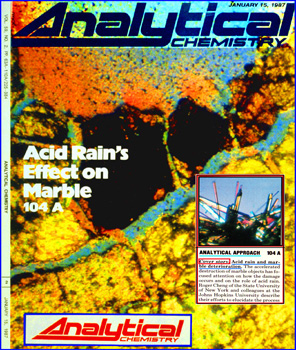
|
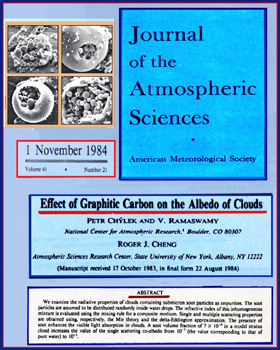
|

|

|
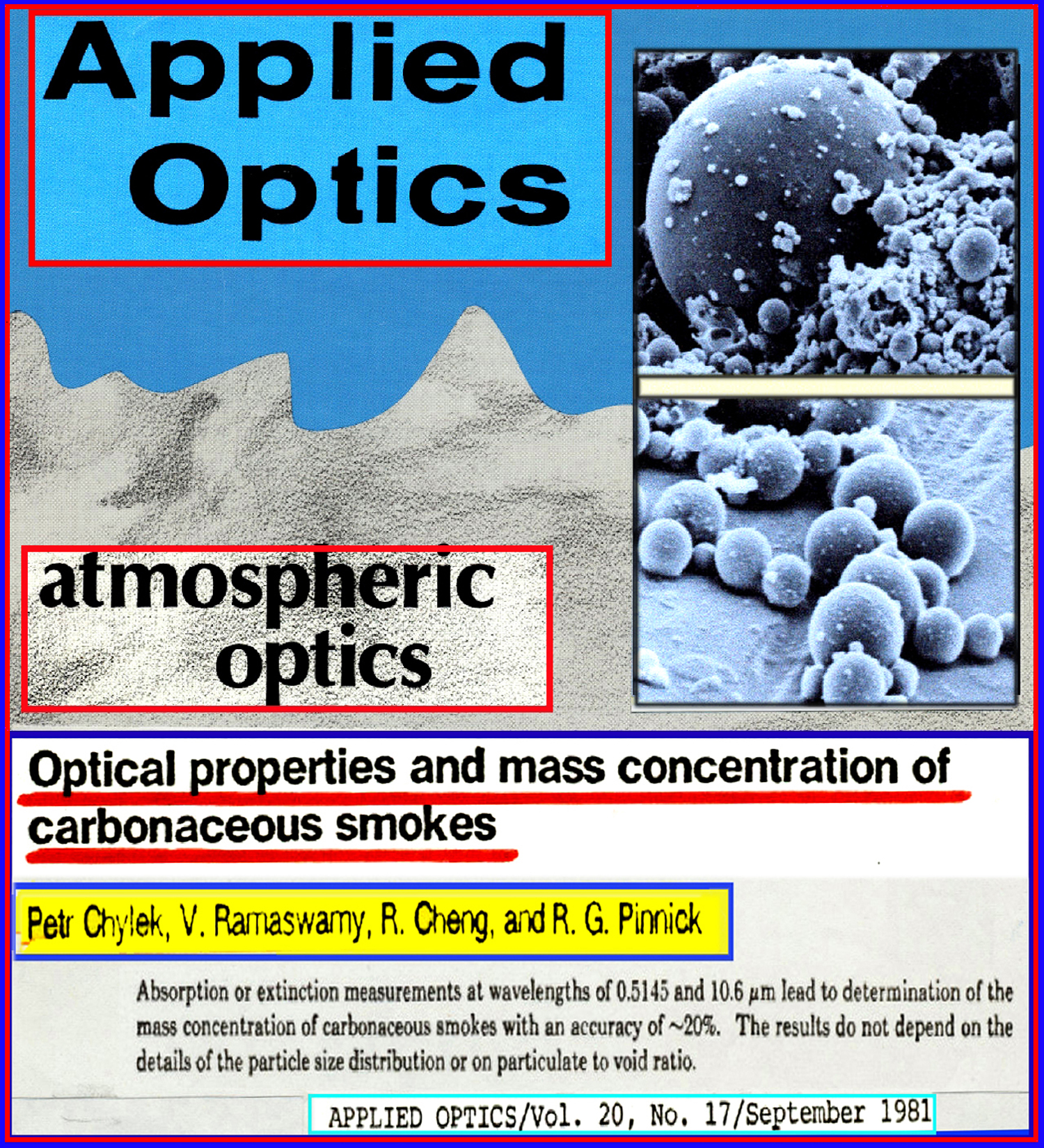
|
.jpg)
|
|---|---|---|---|---|---|---|---|---|
***HOME *** |
POWER
PLANT EMISSION |
ACID
RAIN FORMATION |
ECOLOGICAL
EFFECT |
ALBEDO
of CLOUDS |
BUILDING
EROSION |
ATMOSPHERIC
PTS |
CARBONACEOUS
PTS |
AIR
POLLUTION CONTROL |























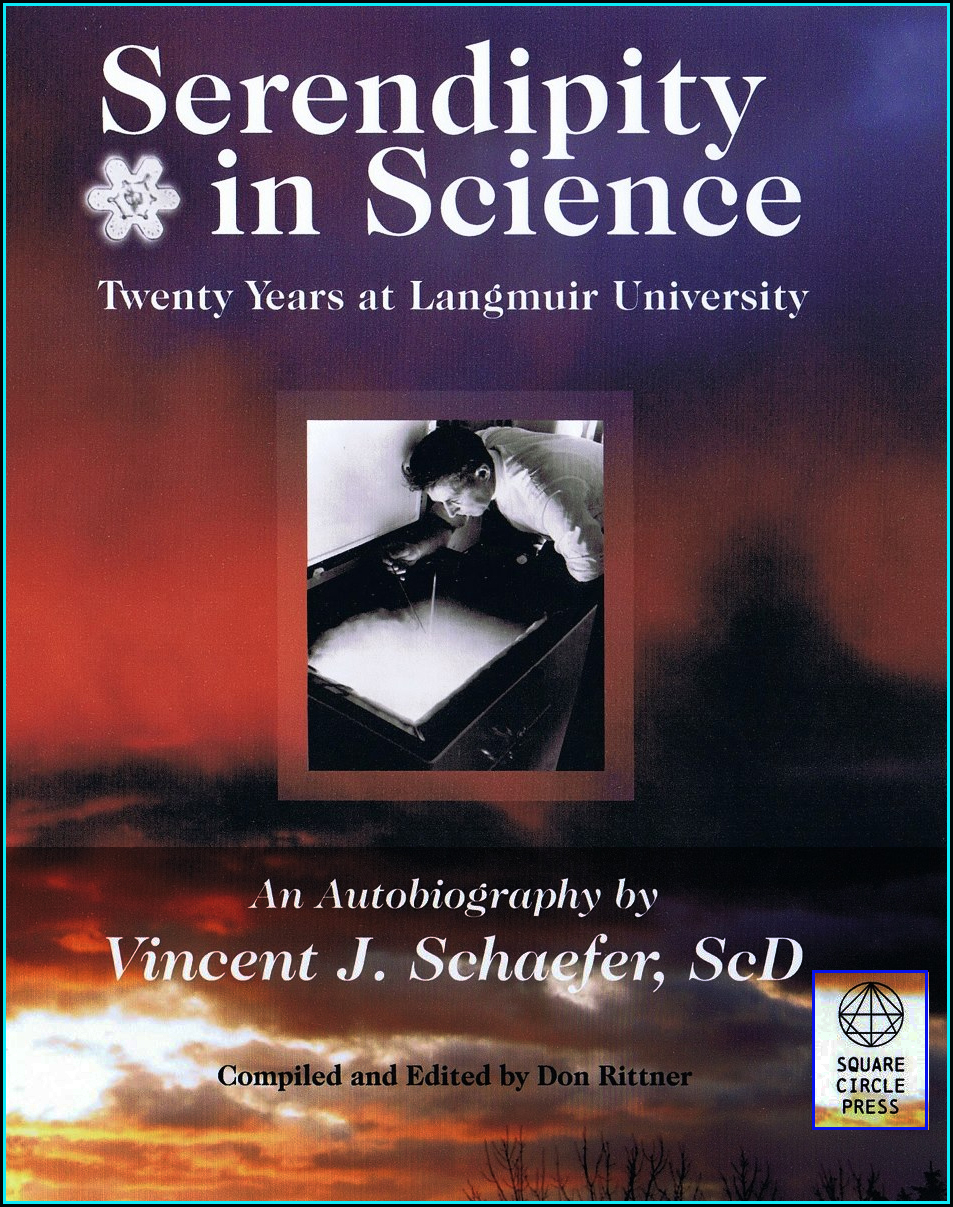








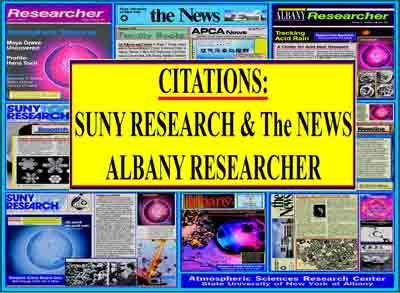
.jpg)
